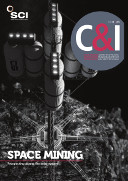The breast cancer cell line MCF-7 has served as a workhorse for in vitro cancer experiments for over 40 years. Now, researchers in the US report remarkable differences in what were supposed to be the same clonal MCF-7 cells from the same cell bank.
The cells responded differently to chemicals, even though no problems were spotted using the usual cell authentication tests at the time of purchase. Further tests showed the cells were genetically different from that time, however (Scientific Reports, doi: 10.1038/srep28994).
‘These are Franklin cells,’ said Thomas Hartung, speaking at the EuroScience Open Forum (ESOF) in Manchester, UK, in August 2016. ‘There is remarkable loss and reshuffling of the genome, with 50% of the genome in less than two copies and 10% completely lost. Some chromosomes we can’t identify any more.’
Scientists have long worked under the assumption that cells bought from the same lot of a cell bank are clones – they should carry the same DNA. The reliability of this assumption underpins a great deal of biomedical research.
The discovery follows an estimate in 2015 that irreproducible biomedical research costs $28bn/year in the US (PLoS Biology, 2015, doi:10.1371/journal.pbio.1002165). It raises uncertainty about the reproducibility of experiments using these cells. This is especially concerning because MCF-7 is an established cell line isolated in 1970; almost 23,000 articles cite its use in PubMed database, for basic and applied sciences such as cancer mechanisms, characterisation of drug effects and assessment of endocrine disruption for chemicals.
Two different schools – John Hopkins Bloomberg School of Public Health and Brown University – purchased frozen vials of cells from the same lot from the same cell bank in the study. The MCF-7 cells’ appearance was different in each case; cells at Brown University proliferated wildly in response to oestrogen while those at Johns Hopkins remained static, and the different batches produced different amounts of metabolic byproducts.
‘These results show we have a problem with the materials we start with,’ said Hartung. ‘We need much more quality control in cell culture.’
In response to such problems, the International Good Cell Culture Practice Collaboration, launched at ESOF 2016, aims to develop internationally agreed standards for quality assurance of cell cultures.
‘This interesting paper shows standard methods for verifying cell line authenticity miss the intrinsic differences that can arise between different populations of the same model,’ notes Jason Carroll at Cancer Research UK. ‘The findings highlight the need to verify all findings not just in addition clones of the same model, but in different models and parallel systems.’





